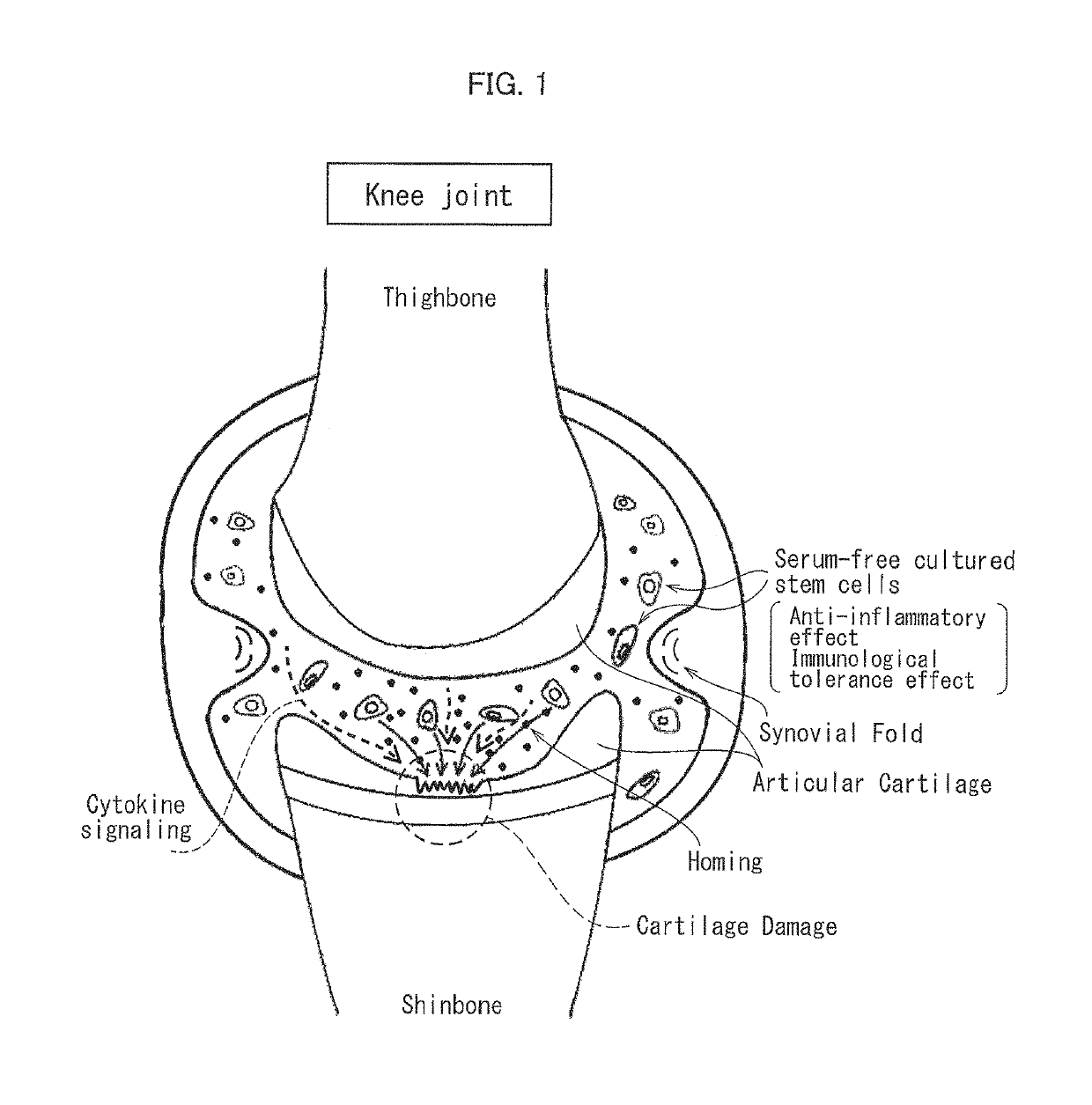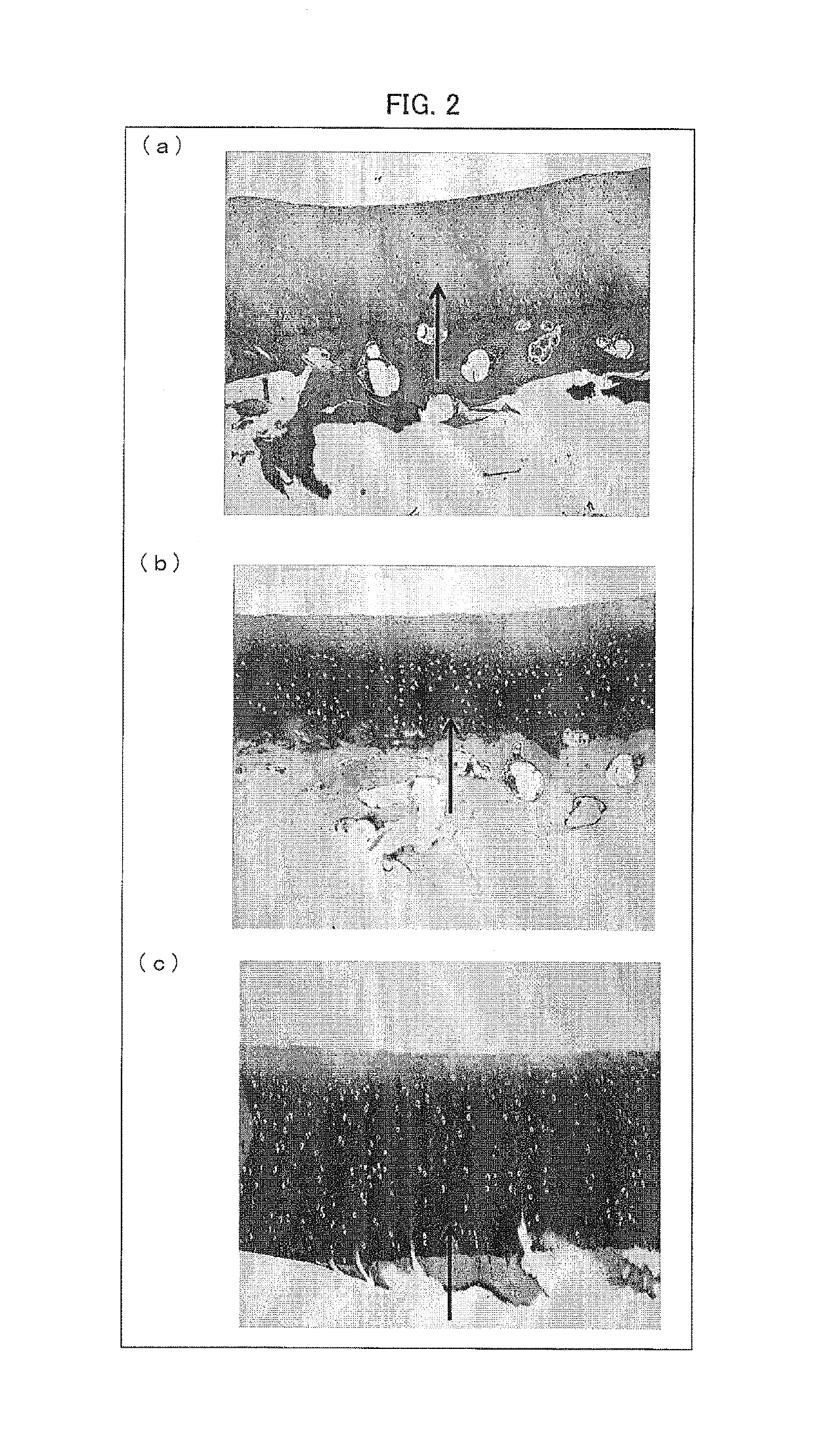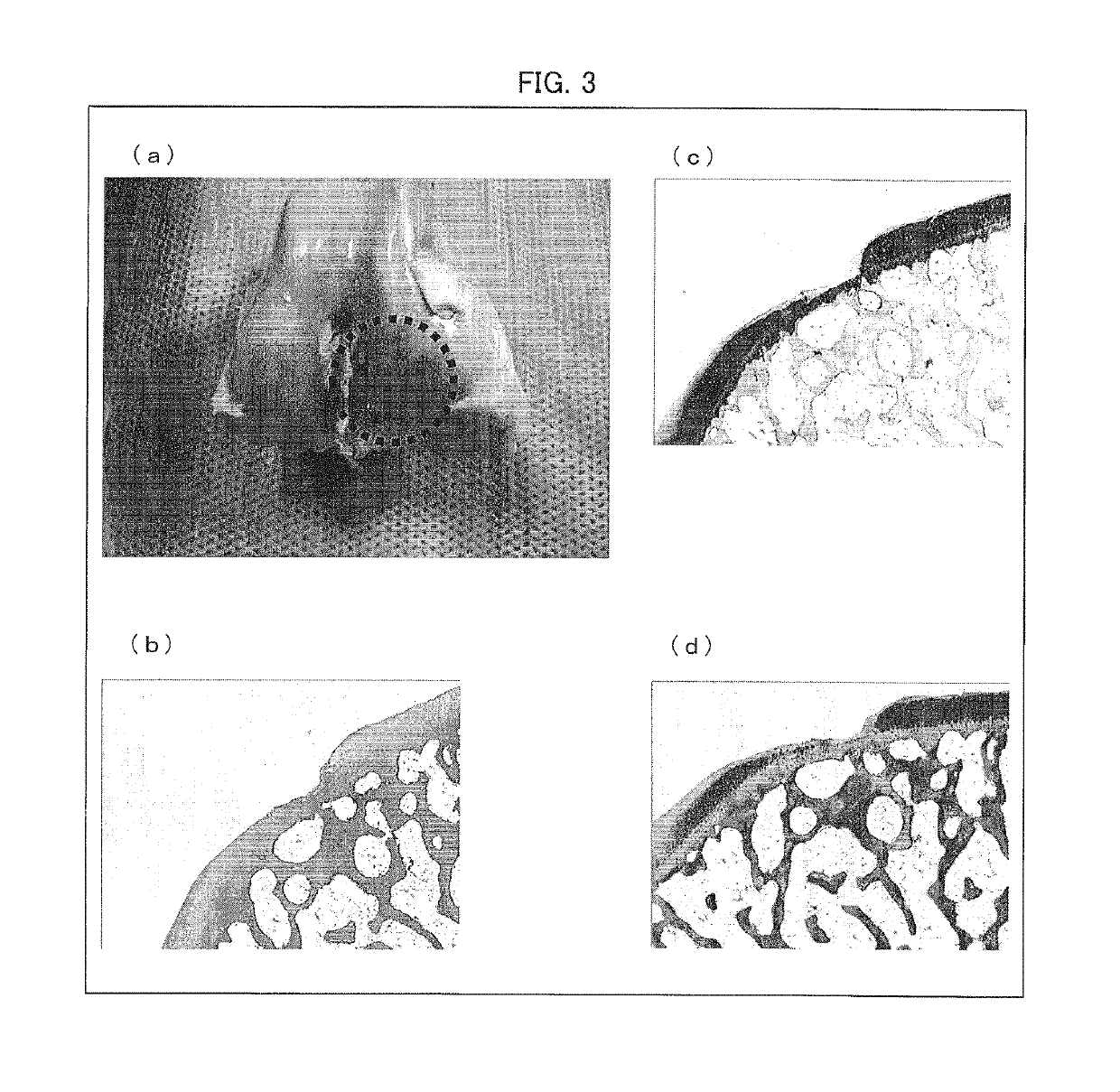Cartilage-damage treatment agent and method for producing same
a cartilage damage and treatment agent technology, applied in the direction of drugs, skeletal/connective tissue cells, prostheses, etc., can solve the problems of symptomatic treatment, not curative treatment, and almost impossible to naturally regenerate the articular cartilage, etc., to achieve favorable regenerative effect of cartilag
- Summary
- Abstract
- Description
- Claims
- Application Information
AI Technical Summary
Benefits of technology
Problems solved by technology
Method used
Image
Examples
examples
I. Experiments on Cartilage Regeneration
[0202](1. Cell Culturing)
[0203]A cartilage defect model of a dog was prepared with use of a temporomandibular joint arthroscope whose diameter was 2.0 mm, by causing a half-thickness defect of a cartilage of a knee joint of a healthy adult beagle dog (Kitayama Labes Co., Ltd., age in months: 11 months old, sex: male). Then, a synovial membrane tissue was invasively obtained from another knee joint which was different from the knee joint whose cartilage had the half-thickness defect. Further, thus obtained synovial membrane tissue was immersed in physiological saline solution to which antibiotics (penicillin-streptomycin, concentration: 1%, produced by Sigma-Aldrich Co. LLC.) in a 50 mL tube were added. Subsequently, the synovial membrane tissue was transported to a laboratory. Thus transported tissue was shredded with scissors, treated with collagenase, and then filtrated with a filter. Then, cells from the tissue were inoculated at a uniform ...
PUM
| Property | Measurement | Unit |
|---|---|---|
| area | aaaaa | aaaaa |
| concentration | aaaaa | aaaaa |
| concentration | aaaaa | aaaaa |
Abstract
Description
Claims
Application Information
 Login to View More
Login to View More - R&D
- Intellectual Property
- Life Sciences
- Materials
- Tech Scout
- Unparalleled Data Quality
- Higher Quality Content
- 60% Fewer Hallucinations
Browse by: Latest US Patents, China's latest patents, Technical Efficacy Thesaurus, Application Domain, Technology Topic, Popular Technical Reports.
© 2025 PatSnap. All rights reserved.Legal|Privacy policy|Modern Slavery Act Transparency Statement|Sitemap|About US| Contact US: help@patsnap.com



